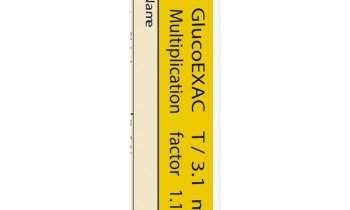Revisions to the diabetes treatment algorithm
By Karen Dente
A panel of experts, convened by the American Diabetes Association and the European Association for the Study of Diabetes, has issued updated treatment recommendations for type 2 diabetes, in a consensus statement published online in two journals: Diabetes Care and Diabetologia*.
The revisions to the diabetes treatment algorithm, first published in 2006, provide guidance to healthcare providers for treating type 2 diabetes, taking into account new medications that have come on the market and current scientific data regarding previously recommended drugs.
The algorithm describes a stepped-care approach to treat the elevated levels of blood glucose and HbA1c, a measure of average glucose levels during the previous 2-3 months, that characterise diabetes. The consensus statement authors again suggest lifestyle changes and metformin as the initial treatment to help patients newly diagnosed with type 2 diabetes achieve HbA1c goals. The lifestyle intervention and metformin are usually continued throughout the treatment course. However, if glucose/glycaemic goals are not met, or not maintained over time, the algorithm progresses to Step 2 and provides two choices.
The first choice (preferred and well validated) calls for the addition of basal insulin, or a sulfonylurea, to lifestyle changes and metformin. Alternatively, a less preferred and less validated choice includes the addition of pioglitazone or a GLP-1 agonist to lifestyle changes and metformin. If the Step 2 choices do not maintain HbA1c goals, the panel suggests initiation of basal insulin, if not already started, and then transition to intensive insulin (Step 3), if needed. As in the original algorithm, all of the transitions in therapy usually occur at 3-month intervals, aiming for rapid achievement and continuous maintenance of near-normal glucose and HbA1c levels.
‘Excellent glycaemic control is critical to prevent the long-term complications associated with diabetes, which can lead to loss of vision, kidney failure, and amputations,’ said the Panel Chair
Dr David M Nathan. ‘After much deliberation, we intentionally chose therapies we highly recommend as safe, effective, and that have much evidence supporting their use. The second tier drugs are valuable if hypoglycaemia is a major concern, but the use of these drugs is less validated.’
Professor Ele Ferrannini, Past President of EASD, added: ‘This joint EASD/ADA statement on type 2 diabetes treatment is an effort to represent the latest scientific evidence relevant to the use of blood glucose lowering agents in the hope of providing comprehensive guidance to clinicians.’
*Diabetes Care is published by the American Diabetes Association. Diabetologia is the official journal of EASD.
20.11.2008










